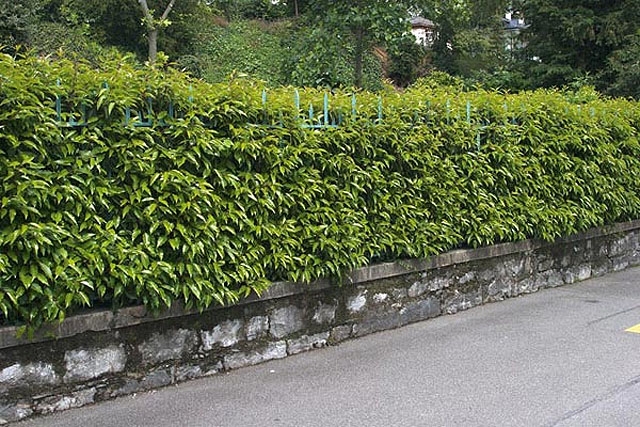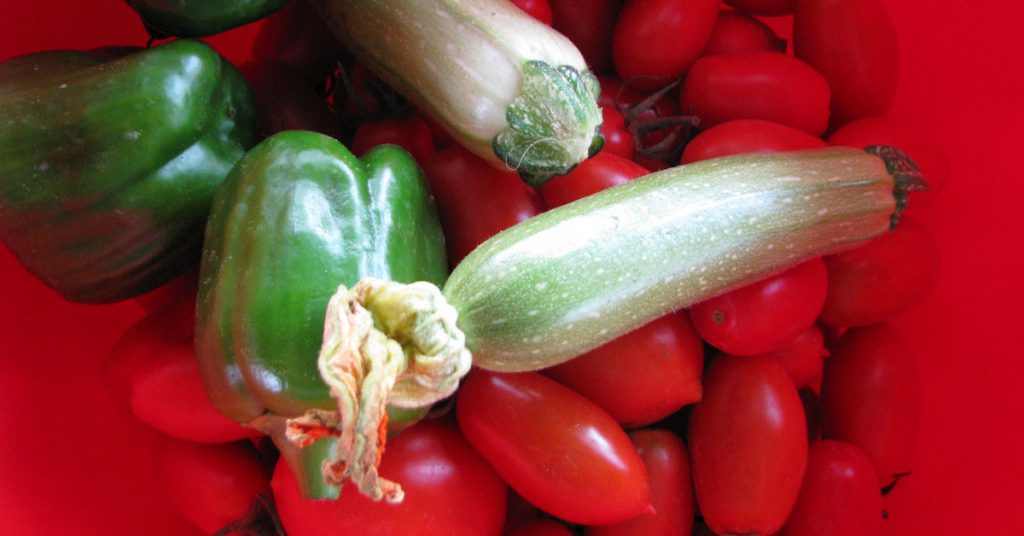Viburnums are popular flowering landscape shrubs that come in an almost infinite number of cultivars. They offer beautiful summer blooms, fall foliage, and evergreen leaves. For most viburnum shrubs, bloom times span from early spring through June, followed by attractive fruit and outstanding fall foliage. Fast-growing viburnums can be grown as either shrubs or small trees.
Viburnum origin
Viburnum is a genus of about 175 shrubs and small trees belonging to the family Adoxaceae. They are native to temperate and subtropical Eurasia and North America, with about 16 species native to Malaysia. Many species are cultivated for their ornamental foliage, fragrant clusters of usually white flowers, and colorful blue-black fruits.
Why Viburnum is a good plant for your garden
Viburnum is a popular choice for gardens due to its versatility and beauty. Here are some reasons why you might want to consider planting a viburnum in your garden:
- Variety: With an almost infinite number of viburnum cultivars available, you can find one to suit any garden. There is no single type of viburnum foliage – it can be rounded, lance-shaped or toothed, smooth, velvety, or rough. There are some evergreen viburnum varieties, in addition to many deciduous varieties with outstanding fall color.
- Flowers: Viburnums offer beautiful summer blooms that come in three major types: flat clusters of florets, flat umbels outlined with larger flowers resembling lace-cap hydrangeas, and dome-shaped, snowball-like clusters.
- Fruit: After the blooms fade, many viburnum varieties produce attractive fruit that can add interest to your garden. The fruit is a spherical, oval, or somewhat flattened drupe that can be red to purple, blue, or black.
- Fall Foliage: In addition to their beautiful flowers and fruit, many viburnum varieties also have outstanding fall foliage that can add color to your garden.
- Fast-growing: Viburnums are fast-growing and can be grown as either shrubs or small trees.
- Easy to Grow: In general, viburnums are not particular about where they grow and are fairly easy to care for.
- Wildlife-friendly: The fruit of many viburnum varieties is a food source for birds and other wildlife.
- Hedge Plant: Viburnums make great hedge plants due to their dense growth habit and attractive foliage.
- Screening Plant: Viburnums can also be used as screening plants to provide privacy in your garden.
- Fragrance: Some viburnum varieties have fragrant flowers that can add a pleasant scent to your garden.
- Versatility: Viburnums can be used in a variety of garden settings – as specimen plants, in mixed borders, or as foundation plantings.
- Year-round Interest: With their beautiful flowers, fruit, fall foliage, and evergreen leaves (in some varieties), viburnums provide year-round interest in the garden.
Where to plant Viburnum in the garden
Viburnums prefer full sun but will tolerate part shade. In fact, some afternoon shade is desirable in the warmer zones of the plant’s hardiness range. These shrubs prefer fairly moist, well-drained soil but do not like to have their roots soaking in water. Viburnums like slightly acidic soil but many types will tolerate alkaline soil.
A deep watering every week is usually sufficient, either through rainfall or irrigation. Native varieties that are well-established have a fairly good drought tolerance.
How to take care of Viburnum plant
In general, viburnums are not particular about where they grow, though they prefer fairly rich, moist soil. Viburnums do not transplant well once established, so the best strategy is to plant well-established container-grown plants and take care to choose a location where the shrub will have room to grow. Early spring is the best time for transplanting, giving them a full season to adjust.
To plant viburnum, dig a hole as deep as the container and twice as wide. Gently remove the plant from the container and place it in the center of the hole. Backfill the hole halfway, add some water, then fill the hole completely. After planting, add a 5 centimeters layer of mulch to help the soil hold in moisture. During hot weather, the shrubs should be watered every 7 to 10 days.
Viburnums prefer full sun but will tolerate part shade. In fact, some afternoon shade is desirable in the warmer zones of the plant’s hardiness range. These shrubs prefer fairly moist, well-drained soil but do not like to have their roots soaking in water. Viburnums like slightly acidic soil but many types will tolerate alkaline soil.
A deep watering every week is usually sufficient, either through rainfall or irrigation. Native varieties that are well-established have a fairly good drought tolerance.
Viburnum – Most common varieties and cultivars
There are many varieties and cultivars of viburnum to choose from, each with its own unique characteristics and benefits. Here are 20 common varieties and some of their benefits:
- Allegheny: This hybrid cultivar has fragrant white blossoms with raised yellow anthers for a fuzzy look. It grows in Zones 5 to 8 and has deeply creased leaves with veins for a textured, leather-like appearance. Bright red drupes mature to black.
- American Cranberrybush: This native shrub is known for its edible red drupes. It grows to mature dimensions of eight to 12 feet tall and wide.
- American Spice: This variety is known for its spicy-sweet fragrance.
- Arrowwood: This North American species has roundish to oval, coarsely toothed leaves.
- Brandywine: This variety produces abundant fruit in shades of pink and blue.
- Burkwood: This hybrid shrub was obtained by crossing Koreanspice viburnum and service viburnum.
- Cayuga: This hybrid variety has large, fragrant flowers.
- David: This evergreen shrub is one of the most popular choices due to its attractive veining on dark green leaves, white flowers from December through to April, and metallic blue berries.
- Dawn: This deciduous viburnum is a hybrid of two parent species and is grown for its clusters of scented, pale pink flowers and its rich autumn color.
- Emerald Triumph: This variety has glossy green foliage that turns red in the fall.
- European Snowball: This variety is known as snowball or guelder rose for its round, roselike heads of sterile florets.
- Forest Rouge: This variety has dark green leaves that turn red in the fall.
- Judd: This hybrid variety has fragrant flowers.
- Korean Spice: This variety is known for its spicy-sweet fragrance.
- Lantana: This European species grows to 5 meters tall.
- Lantanaphyllum: This hybrid variety has glossy green leaves.
- Laurustinus: This evergreen shrub is native to the Mediterranean area and has oblong leaves.
- Mapleleaf: This native species has three-lobed leaves that resemble maple leaves.
- Mohican: This variety has white flowers and orange-red fruit that matures to black.
- Nannyberry: Also known as sheepberry, this North American species has finely toothed, oval leaves.
Viburnum pests and diseases
Viburnum is generally resistant to most diseases. However, infected plants are typically weakened by improper care or are in poor health otherwise. Here are some common pests and diseases that can affect viburnum and how to fight them:
- Fungal Leaf Spots: A variety of leaf spots can be caused by fungi such as Cercospora species, Phoma species, and Phyllosticta species. These fungal leaf spots on viburnum typically are angular to irregular-shaped, and the leaf tissue in the spots is sunken and dry. Fungal leaf spots typically occur during warm, moist summer months and initially will occur on older foliage. To prevent fungal leaf spots, keep leaves as dry as possible by avoiding overhead irrigation and improving air circulation with adequate plant spacing and selective branch pruning. Prune overhanging trees around diseased shrubs to reduce humidity levels and speed the drying of foliage. Hand remove spotted leaves on lightly diseased plants. Rake up and destroy infected fallen leaves, then apply a fresh layer of mulch beneath plants. If chemical control is needed, most fungal leaf spots can be controlled with fungicides containing chlorothalonil, thiophanate-methyl, myclobutanil, or mancozeb.
- Algal Leaf Spot: Algal leaf spot, caused by Cephaleuros virescens, may occur especially during cool, moist conditions. Leaf spots start as small, pale green circular spots and eventually become light brown or reddish-brown with age. Often the spots appear raised and velvety with feathered edges. When the spots become reddish-brown, they are producing their reproductive structures called sporangia. Wind and splashing rain will spread this type of algae to nearby foliage. The organism that causes it overwinters in the leaf spots. To control algal leaf spot, you can use copper fungicide.
- Powdery Mildew: Viburnum species may become diseased with powdery mildew caused by the fungus Erysiphe viburni. The occurrence and spread of this disease is favored by a combination of warm days, cool nights, and humid conditions but is inhibited by rain. Powdery mildew is worse on plants in the shade.
- Botryosphaeria Canker: This devastating disease affects many ornamental plants, including viburnum. The disease causes cankers or dead areas on the stems of the plant. The cankers are often dark in color and may ooze sap. The disease can spread quickly and can kill a viburnum plant if left untreated. Treatment for this disease includes pruning out affected branches and stems and destroying them.
- Armillaria Root Rot: Species of Armillaria (the honey mushroom) are found in soils throughout the world and may cause fatal infections on a variety of trees and shrubs, including viburnum.
- Downy Mildew: This disease is caused by a fungus-like organism that produces white fluffy growth on the undersides of leaves.
How to propagate Viburnum
Viburnum can be propagated either by softwood or hardwood cuttings. Softwood cuttings are taken in mid to late spring and tend to root much easier than hardwood cuttings. Hardwood cuttings are taken in autumn after leaves have fallen or in winter and can be a bit more difficult to root.
Propagate Viburnum with softwood cuttings
To propagate viburnum from softwood cuttings, take a 10 to 15 centimeters section from vigorous shoots in the morning, preferably after a rain. Remove the leaves from the lower third of the cutting. Provide a rooting medium of 1 part peat and 1 part perlite or substitute horticultural sand for the perlite, if preferred. Pre-moisten the rooting medium. Rooting hormones can enhance rooting but are not strictly necessary. Remember, you only need a touch on the cut end of the stem. Insert the cut end into the prepared medium one-third to one-half its length. Cover with plastic and set containers in indirect light. Keep the medium lightly moist and mist the cuttings occasionally to keep them moist. Rooting time is variable but check by gently tugging on the cutting in four weeks.
Propagate Viburnum by layering
Another method to propagate viburnum is by layering. Layering is the simplest of all methods to propagate viburnum. Start the layering process in spring when the plant is supple with new growth. Select a low-lying young branch and bend it to the ground.
Greek name: Βιβούρνο.
Sources: https://www.thespruce.com/growing-viburnums-1403321, https://www.rhs.org.uk/plants/viburnum/growing-guide, https://www.almanac.com/plant/viburnum, https://www.gardeningknowhow.com/ornamental/shrubs/viburnum/viburnum-shrub.htm, https://www.britannica.com/plant/viburnum, https://en.wikipedia.org/wiki/Viburnum, https://hgic.clemson.edu/factsheet/viburnum/, https://gardenerspath.com/plants/ornamentals/best-viburnum-varieties/, https://everythingbackyard.net/main-types-viburnum-shrubs-care/, https://www.gardenersworld.com/plants/best-viburnums-to-grow/, https://leafyplace.com/viburnum/, https://hgic.clemson.edu/factsheet/viburnum-diseases-insect-pests/, https://gardenerspath.com/how-to/disease-and-pests/viburnum-disease/
Tags: BUSHES • GARDEN • ORNAMENTAL PLANTS • PLANTS • SOFIA PAPAZOGLOU AGRONOMIST





